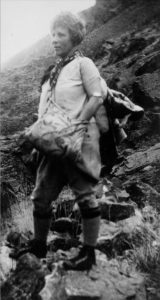
sensitive herbaceous
Distribution: Foothills
USDA Plants Link: Allium aaseae (ALAA)
Flora of North America Link: Allium aaseae
Wildflower walks along the Boise Front

USDA Plants Link: Allium aaseae (ALAA)
Flora of North America Link: Allium aaseae
Aase’s onion is among the most special of our local plants, growing only in sandy areas in the foothills from Boise to Weiser in the entire world. Although easily spotted in early spring on some of our most popular trails, including Buena Vista Trail and Polecat Gulch Trail, the seeming abundance of plants at the few places where there are still healthy populations should not fool you into thinking that the species as a whole is doing fine. Sadly, other populations are struggling against the invasion of aggressive non-native species, or outright disappearing to housing developments, and even protected populations are not immune to habitat degradation. It is therefore important to stay on the trail when passing through a population, and to avoid doing anything to damage these vulnerable plants.

Aase’s onion was named for geneticist Hannah Caroline Aase (1883-1980) by Francis Marion Ownbey, as part of his research on the genus Allium. Dr. Aase was on the faculty at State College of Washington (now Washington State Univ.) from 1914 to 1949, where her primary research topics included the heredity of cereal grains and cytogenetics of onions. Aase apparently made no collections herself of the onion that Ownbey named in her honor; instead, Ownbey used one of his own collections as the type specimen, from “low hills directly back of Collister schoolhouse” in 1947. The photo used here is from the personal collection of her colleague Lincoln Constance, during one of the university’s field trips in Hells Canyon.